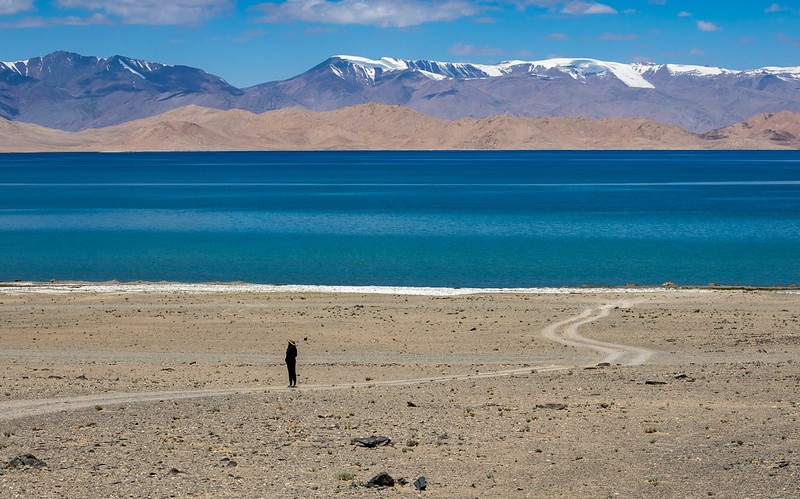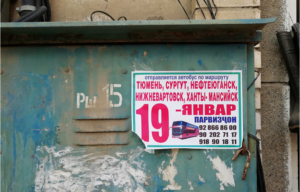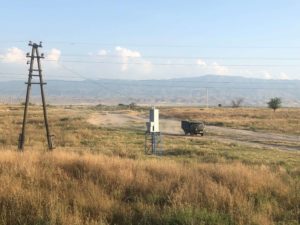According to official statistics the number of tourists visiting Tajikistan fell by 72 per cent from 2019 to 2020.
A version of this article was published on Novastan’s French website on 23 February 2021.
Tajikistan’s latest tourism statistics reveal an undeniable conclusion: the sector has collapsed and the country’s economy is on the brink. On 12 February 2021, Tajik news outlet Asia-Plus reported that the number of visitors to the country fell to 350,000 in 2020, down 72% from 1,254,000 in 2019. The tourism sector, which in 2019 accounted for 2-2.5% of the country’s Gross Domestic Product (GDP), represented only 1% of GDP in 2020.
The official statistics do not provide a breakdown of people’s reasons for visiting the country, and therefore do not distinguish between business trips and tourism. In 2019, the Tajik authorities used this loose definition to their advantage, announcing statistics that were 10 times higher than in reality. Nevertheless, the 2020 statistics represent a steep decline.
Want more Central Asia in your inbox? Subscribe to our newsletter here.
While Tajikistan has recorded the lowest number of COVID-related deaths in Central Asia—90 registered deaths compared to 1,450 in Kyrgyzstan and 3,150 in Kazakhstan—strict measures imposed in response to COVID have taken a toll. Despite receiving $400 million in aid funding, Tajikistan has failed to indicate clear economic measures to protect against the impact of COVID-19, according to Radio Ozodi (the Tajik branch of Radio Free Europe). The International Monetary Fund (IMF) has estimated that overall economic growth was 1% in 2020, compared to a rate of 7.5% in 2019.
Signs of an exhausted economy
The collapse of the tourism industry in Tajikistan is, in reality, just one visible signpost of the country’s suffering economy. One of the poorest countries in the Commonwealth of Independent States (CIS), Tajikistan was already heavily dependent on foreign aid before the COVID crisis and is now facing staggering financial difficulties.
The revenue that contributes to Tajikistan’s GDP can be divided into three main economic sectors. According to 2019 World Bank statistics, agriculture generated 19% of the country’s wealth, industry and manufacturing accounted for 27%, and the “services” industry generated over 42% of GDP. In reality, the majority of the “services” category is represented by money sent home by Tajik workers living abroad—mainly in Russia.
These remittances represented 28.6% of Tajikistan’s GDP in 2019, with 70% of the Tajik population relying on these funds to survive. But with successive COVID lockdowns—particularly in Russia—the amount of money sent back to the country has drastically declined. At the same time, foreign direct investment diminished by nearly 47% in one year, as reported by Radio Ozodi. In light of these difficulties, the collapse of the tourism sector has devastated an already weakened economy.
A sector in need of development
For several years, the Tajik government has expressed the intention of developing the country’s tourism industry. Designating 2018 “the year of tourism”, Tajik President Emomali Rahmon hoped his country could overcome some of the structural difficulties that limit Tajikistan’s ability to cater to and attract foreign visitors.
Issues such as the lack of transport facilities, banking services, and high-quality accommodation outside big cities prevent Tajikistan from becoming a mainstream tourist destination. Unfortunately, these challenges are yet to be addressed by the Tajik government.
However, in April 2018, the Tajik president extended the visa-free period for foreign visitors from three to ten working days in an effort to attract tourists. Large hotel chains such as the Hyatt Regency, Hilton Hotels and Serena Hotels have established hotels in the capital Dushanbe, and 2020 saw the creation of 22 new tourist agencies in Tajikistan (now totalling 224).
Tajikistan’s high geographical elevation—with mountain peaks between 6,000 and 8,000 metres—represents opportunities for the further development of adventure tourism, which has rapidly expanded over the past few years. The richness of Tajik poetry and folklore, and the fantastic natural landscape along the Pamir Highway also represent great tourist potential.
Domestic tourism presents opportunities
On 26 January, the Tajik authorities announced that the country had beaten coronavirus. Health Minister Jamoliddin Abdullozoda attributed this success to government health measures, claiming that the absence of a lockdown in favour of a home quarantine program assisted in the eradication of COVID-19. This “victory” led Emomali Rahmon to announce the reopening of mosques from 1 February and may signal a wider reopening of the country.
Read more on Novastan: Is Tajikistan really free from coronavirus?
Tojiddin Jurazoda, the head of Tajikistan’s Tourism Development Committee, told Asia-Plus that reviving the tourism industry is both an opportunity and a necessity. To achieve this, new projects are being planned for 2021, including the reconstruction of the Yamchun Fort, which once guarded a strategic passage along the Silk Road between India and Iran, and the restoration of the majestic Hulbuk citadel, located in the Vose District in the south-west of the country. The Khoja Mashkhad complex, a major pilgrimage destination tentatively listed for consideration of UNESCO World Heritage status in 1999, will also be renovated in 2021 in an effort to attract believers and visitors.
Jurazoda also discussed the Committee’s plans to expand rural tourism through the establishment of hostel-style accommodation and homestays. Whether these initiatives will be enough to revive the Tajik tourist industry—and the country’s economy with it—remains to be seen.
Caroline Deschamps
Novastan.org
Translated from French by Alice Coveney
Edited by Clare Hodgson
For more news and analysis from Central Asia, follow us on Twitter, Facebook, Telegram, Linkedin or Instagram.
 Tajikistan’s tourism industry collapses in the wake of COVID
Tajikistan’s tourism industry collapses in the wake of COVID 



